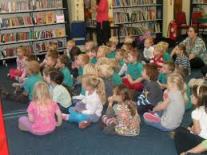
Part I: Picture Books about Sounds 繪本中的音與歌 河合隼雄
- 有魔法的語言 – how animals communicates with sounds and sounds became languages between humans
- 非洲的聲音 – drums pertains the life of a goat through the sounds it makes (rhythm)
- Inch by Inch The garden song
- 夜裡的幼稚園
- Doodle Flute by Daniel Pinkwater
- The Violin by Robert Thomas Allen
Part II: When Picture Books Become the Focus 當繪本成為焦點時 松居直
- In the Forest by Marie Hall Ets
- Millions of Cats by Wonda GagMillions of Cats by Wonda Gag
- Suspension created using pictures and words. Before the readers turn the page, readers have the opportunities to pause and create their own mental image before they see the picture.
Part III: Pictures are for Adults too 大人更應該看繪本 柳田邦男
- Badger’s Parting Gifts by Susan Varley 、 口袋裡的禮物 – death
- 熊啊 – interconnection of lives and the world (Photo Book with words)
- 基洛努普的狐狸、美代 、一千把大提琴的合奏 – war
Part IV: What Does Picture Books Mean to Adults? 繪本對大人是什麼
- 夏天的早晨
- 神奇的竹筍
- 鳥獸戲話 – Japanese love to tell stories with pictures which can be dated back to the 12th centuries (繪卷)
- 工匠和鬼六
- 手套
- The Little Kind December 、 Ernest and Celestine: on life
- Children’s Reading
- Children listen to the sounds and follow the flow of the words with focus. If the words do not provide an imaginary world then their attention walk away
- Children read objectively. If a narrative morph into a argumentative, the suspense created will fall apart.
- Words confine our imagination. Reading is a solitude activity between one and himself/herself. Listening to reading, however, is to walk hand in hand with another into the co-created imaginary world.
- Bedtime for Frances by Russell Hoban : children fears the monsters but love to hear all about them. “Is there a need to cultivate fears?" According to Yanagida, the fear children feel in the stories are different from what they can feel in reality, there is a need for children to feel the fear in his/her emotions to cultivate empathy.
- The Sea-Thing Child by Russell Hoban:
- Tommy and the Lion (Laci and the Lion) by Marek Veronika : a boy grows courageous happiness with the company of his red little lion
- A Hedgehog Lost In A Fog by Yuri Yabusova: touching, well painted pictures
- The Mysteries of Harris Burdick by Chris Van Allsburg : touching, well painted pictures
- The Widow’s Broom by Chris Van Allsburg:
 你唸故事書,時間慢慢流過,空氣中充滿著愛、平和並夾雜著少少小小孩的咯咯笑聲….小孩排排坐好,想說話的時候舉手,每個人都輕輕柔柔的,老師一點也不必嘶吼,學生也不需要彼此怒目相向,埋怨別人不守規矩,誰又踩了誰,誰又搶了誰的。教學一點也不必費力在「控制」孩子待在自己的位置上!
你唸故事書,時間慢慢流過,空氣中充滿著愛、平和並夾雜著少少小小孩的咯咯笑聲….小孩排排坐好,想說話的時候舉手,每個人都輕輕柔柔的,老師一點也不必嘶吼,學生也不需要彼此怒目相向,埋怨別人不守規矩,誰又踩了誰,誰又搶了誰的。教學一點也不必費力在「控制」孩子待在自己的位置上!
 )。
)。